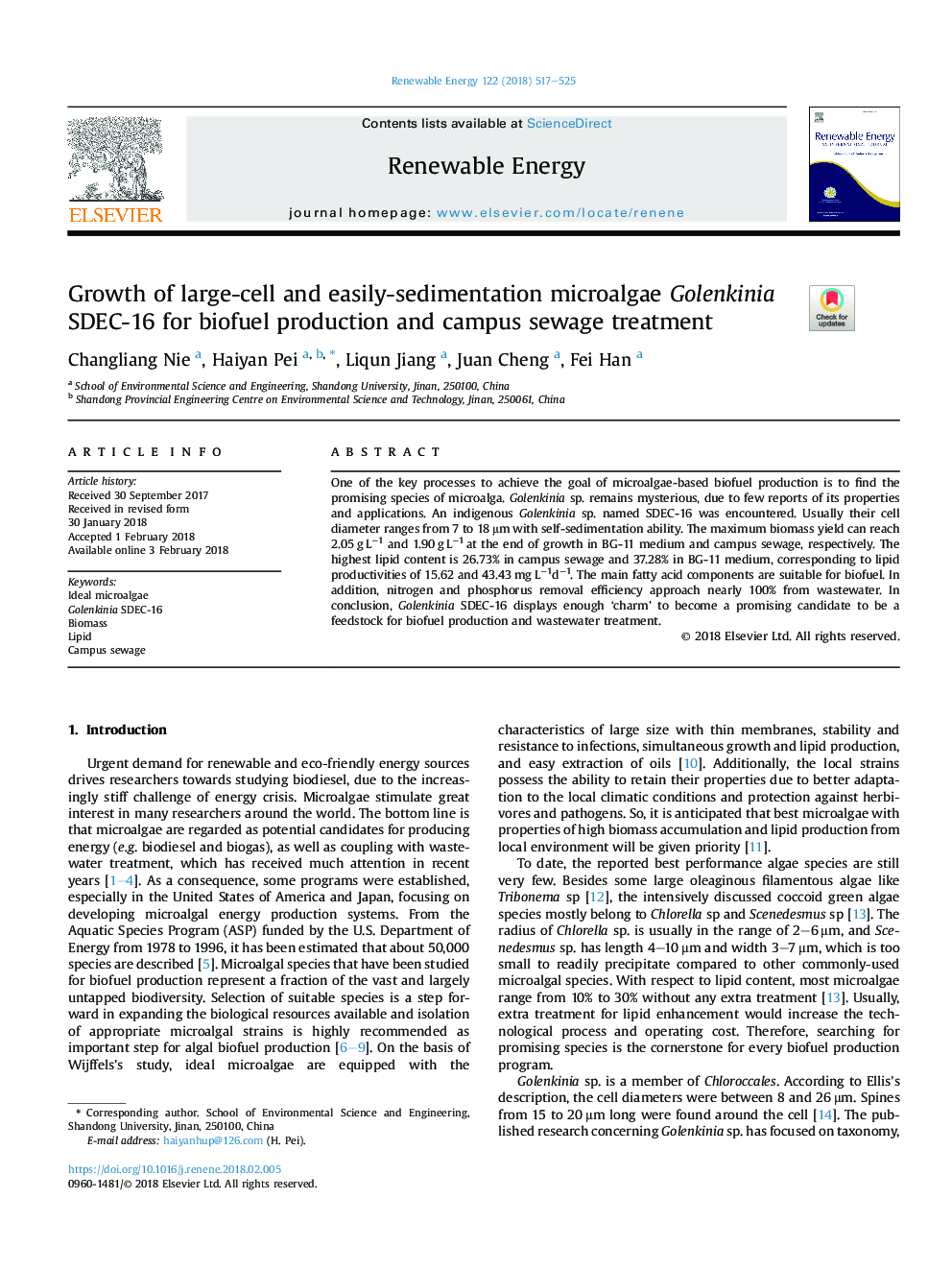| Article ID | Journal | Published Year | Pages | File Type |
|---|---|---|---|---|
| 6764665 | Renewable Energy | 2018 | 9 Pages |
Abstract
One of the key processes to achieve the goal of microalgae-based biofuel production is to find the promising species of microalga. Golenkinia sp. remains mysterious, due to few reports of its properties and applications. An indigenous Golenkinia sp. named SDEC-16 was encountered. Usually their cell diameter ranges from 7 to 18â¯Î¼m with self-sedimentation ability. The maximum biomass yield can reach 2.05â¯gâ¯Lâ1 and 1.90â¯gâ¯Lâ1â¯at the end of growth in BG-11 medium and campus sewage, respectively. The highest lipid content is 26.73% in campus sewage and 37.28% in BG-11 medium, corresponding to lipid productivities of 15.62 and 43.43â¯mgâ¯Lâ1dâ1. The main fatty acid components are suitable for biofuel. In addition, nitrogen and phosphorus removal efficiency approach nearly 100% from wastewater. In conclusion, Golenkinia SDEC-16 displays enough 'charm' to become a promising candidate to be a feedstock for biofuel production and wastewater treatment.
Related Topics
Physical Sciences and Engineering
Energy
Renewable Energy, Sustainability and the Environment
Authors
Changliang Nie, Haiyan Pei, Liqun Jiang, Juan Cheng, Fei Han,
